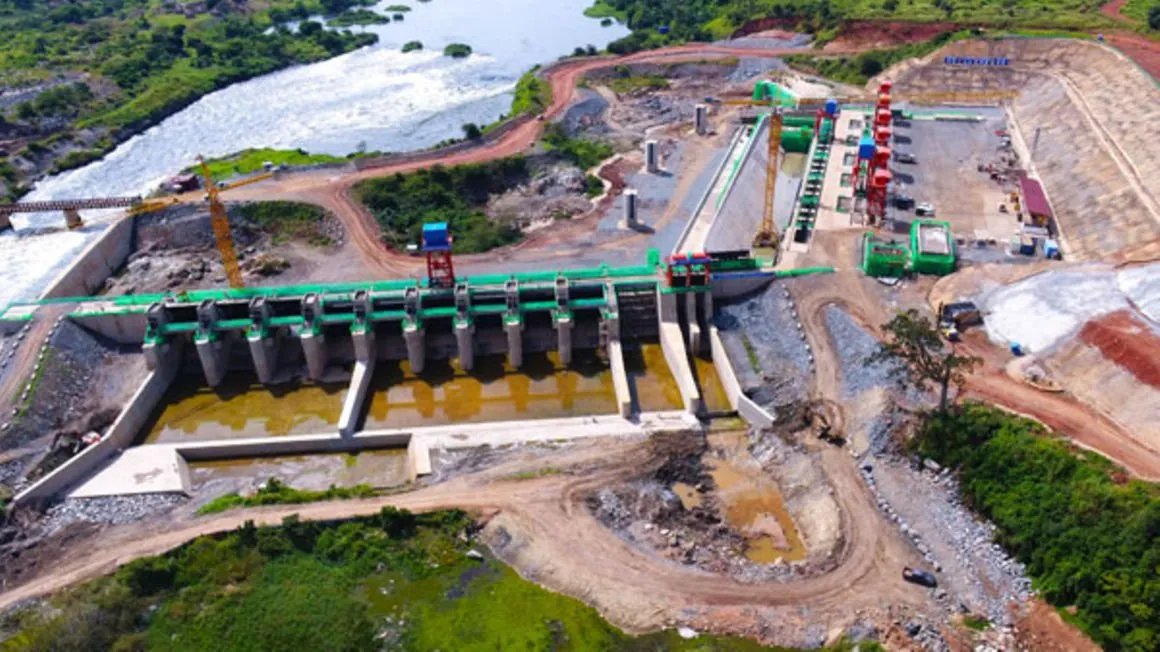Uganda unveils 600MW Karuma Hydropower Plant

A single flooding incident at Isimba Hydropower Plant in August 2022, plunged Uganda into darkness. The incident, which resulted in the emergency shutdown of the 183MW Isimba, coincided with a periodic maintenance of some of the generational units at the 250MW Bujagali, Uganda’s biggest electricity generation plant then.
At the time, Uganda boasted an installed capacity of about 1,370MW, with an effective generation capacity of about 900MW, against peak consumption of about 750MW.
Partial absence of Bujagali at the time meant that the Uganda Electricity Generation Company Limited (UEGCL), the government agency that operates and maintains Isimba, had to work around the clock to restore generation at the plant.
This, however, meant that they did not have time to comprehensively address the problems that had caused Isimba’s emergency shutdown.
This was in addition to a plethora of issues at the Karuma Hydropower Plant then.
“To fully address the issues at Isimba, we need to shut down the plant, but we cannot do that at the moment. You saw what happened when we did an emergency shutdown,” an official said in 2022.
Such incidents are not likely to happen again. For the last 11 years, the Government, through UEGCL, has been developing the 600MW Karuma Hydropower Plant and is scheduled to be commissioned by President Yoweri Museveni.
Karuma Hydropower Plant has been developed with high hopes from Ugandans, who reasoned that the country needed it to be completed to ensure the energy fortunes are brightened.
The plant’s addition to the fold is expected to give Uganda’s electricity supply industry, UEGCL, prospective investors and the general public the needed assurances that the country’s energy fortunes are in a safe place.
Karuma Hydropower Plant commissioning brings Uganda’s installed electricity generation capacity to 2,048MW, according to information from the Electricity Regulatory Authority (ERA).
Irene Batebe, the permanent secretary at the energy ministry, said Karuma’s addition to the national grid signifies an improvement in the Government’s commitment to diversify its energy mix.
“Karuma has pushed our clean energy to 93%, meaning that we do not have to run our thermal plants daily. They are just security plants waiting for emergencies and this speaks to the Government’s commitment to generate clean energy, but also align with international protocols we have entered into,” she said.
However, both the National Development Plan III, the country’s development footprint and the Energy Policy 2023, a document that is expected to guide Uganda’s energy sector for the next 20 years, demand that Uganda has a minimum installed generation capacity of 52,000MW by 2040.
To Eng. Harrison Mutikanga, the UEGCL chief executive officer, this is no mean feat.
“When you look at industrial development and its demand for electricity in this country, we shall certainly need to develop more capacity,” he said.
GREAT ADDITION
Dr Ezra Rubanda, the executive director of Uganda Manufacturers Association, hailed the commissioning of Karuma plant, saying it will increase power in the country.
However, he said an increase in the country’s installed generation capacity comes with expectations of reduced power shortages.
“It gives us an economic edge in terms of regional positioning because it increases on the stock of the surplus power that we can supply across the region and now electricity in our context is an export service,” Rubanda said.
He added that the successful implementation of a project of such a magnitude lifts Uganda’s prospects on the international arena.
Dr Martin Francis Kyeyune, an economic advisor at Roofings Group, hailed Karuma as a source of sustainable energy that will go a long way in driving economic productivity.
“Sustainable electricity characterised by the right price, right quantity, and right quality, keeping other factors in balance, ensures machines are powered, thereby driving productivity of human capital and optimal capability utilisation of equipment.
“We further look forward to witnessing electricity utilisation in our transport system, powering trains and vehicles,” he said.
“We should further take note that hydro, as is the case with Karuma, is a renewable locally generated power. It is like home-grown crops or locally mined resources; these have one feature, that is, working capital with less foreign exchange exposure.
“As an input in industry, if the final product to which the hydro contributes in production value addition is exported, this yields positive trade balance,” Kyeyune added.
One of the biggest expectations as the Government undertakes projects of this magnitude has always been that the local manufacturers stand to gain by supplying locally-produced raw materials like cement and steel.
Kyeyuye said Karuma’s impact has been felt for the last decade the project has been under development.
He said while construction has been growing consistently for the last decade, the import of cement and finished steel has been declining as the local industry was supplying raw materials and filling the gap of the would-be imports.
“This is not only in steel and cement, but rather in many other industries. In 1986, there were 80 factories in Uganda.
These by 2019 were nearly 5,000, and we are on the trajectory to get to over 10,000 factories.
“Our minerals are being utilised, we make mabati, iron bars, and fencing products, and our steel companies like Roofings Group are now exporting to Kenya and Tanzania, DR Congo and South Sudan,” Kyeyune said.
He urged the Government to target to have the right policies towards intensifying the attraction of heavy industries in backward integration, such as cold rolling mills and hot rolling mills, which will enhance capability utilisation of the dams the country has built, something that is expected to reduce electricity tariffs.
“The compounding effect would be increased economic development towards Uganda’s aspiration of boosting the economy tenfold from $50b to $500b in the next 10 years.
IMPACT ON TARIFF
According to ERA, Karuma’s tariff structure is designed to progressively reduce over time as its loan is repaid to China.
For the first 10 years of operation, electricity generated from the plant will be sold to Uganda Electricity Transmission Company Limited at 4.97 US cents (about sh185) per unit as per the prevailing foreign exchange rates.
Between the 11th and the 15th year, UEGCL will sell Karuma’s power at 2.7 US cents (about sh100) per unit before dropping to 1.17 US cents (about sh44) per unit afterwards.
“These changes in the generation tariffs are largely driven by fluctuations in debt service obligations, as payments on the plant’s financing decrease over time. As a result, the overall weighted average generation tariff is expected to decline, benefiting electricity consumers,” Julius Wandera, ERA’s director for public and corporate affairs, wrote to the New Vision.
He said the more costeffectively developed power like Karuma we add to the grid, the more we will see a lower generation tariff of 4.9 US cents (about sh181) per unit.
“In terms of economies of scale, dams like Karuma will be very critical to lowering power tariffs based on the fact that they have been publicly funded,” Wandera added.
However, he said growth in demand and consumption of electricity will be a key factor in reducing the end-user electricity tariffs, a role that the plant is expected to play.
“As electricity consumption increases, particularly from both domestic and industrial users, the increased dispatch and utilisation of Karuma’s capacity will contribute to further lowering of the tariff.
This, in turn, will translate to reduced electricity costs for end users, supporting more affordable and accessible energy for all sectors,” Wandera said.









0 Comments